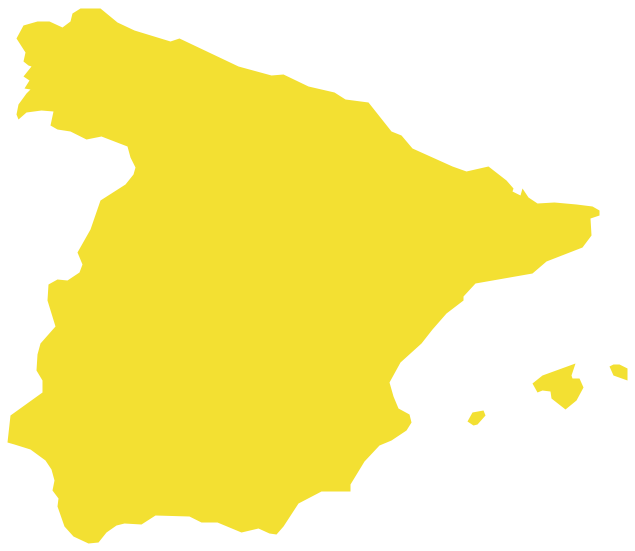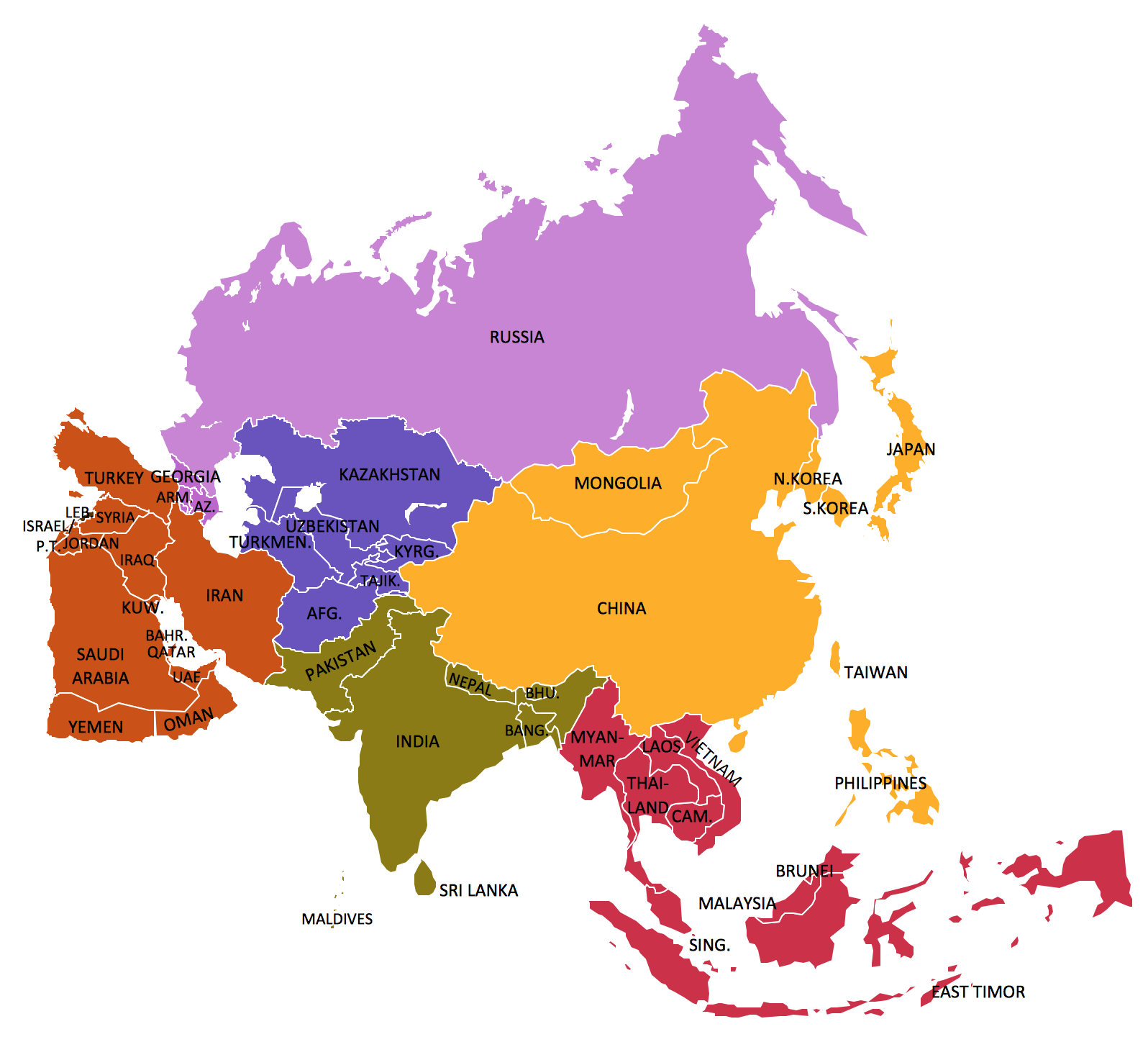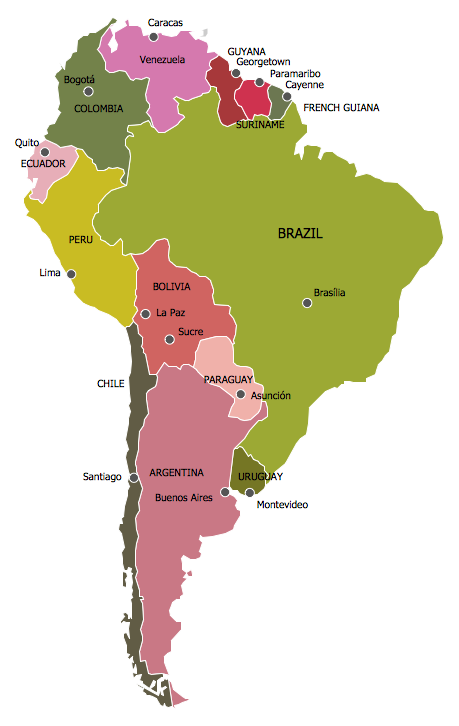Geo Map — Europe — Spain
Europe map contours — Kingdom of Spain
Spain is the country in Europe with 505992 square kilometres of its territory is the world's 52nd largest and the 4th one in Europe, being only 47000 square kilometres smaller than France and 81000 square kilometres larger than California state in America. The highest mountain peak in this country is Mount Teide, located in Tenerife. It is also the 3rd largest volcano in the world from its base.
Spain is known to be a so-called “transcontinental country”, bordered by Portugal on its west side, Gibraltar on the south and Morocco in Africa. It is bordered by France on the northeast along the Pyrenees mountain range, as well as by the Principality of Andorra. Extending to 1214 kilometres, the common border of Spain and Portugal is the longest uninterrupted one within the borders of the European Union, which both Spain and Portugal are parts of. There are also some islands, which are included, known to be the parts of Spain. These islands are Balearic ones in the Mediterranean Sea as well as the Canary ones and many other, but uninhabited islands, on the Strait of Gibraltar. The well-known Pheasant Island is also a Spanish (together with France) condominium.
The mainland of Spain is mountainous with high plateaus as well as the mountain chains. On the second place after the Pyrenees, the main mountain ranges are known to be Cordillera Cantabrica, also known as a “Cantabrian Range”. Then, the Sistema Central, the Montes de Toledo, the Sistema Betico and Sierra Morena take place among the other mountains with the highest peaks, including 3478-metre-high Mulhacen located in the Sierra Nevada. Although, the highest point in Spain is the Teide with its 3718-metre top above the sea level, being also an active volcano in the Canary Islands.
There are quite many rivers in Spain, including the Jucar, Turi, Tagus, Guadiana, Ebro, Guadalquivir, Minho and Segura. There are 17 autonomous communities and 2 autonomous cities within the borders of Spain. These autonomous communities are integrated by 50 provinces, and the provinces are integrated by municipalities. There are two additional divisions in Catalonia can be found, both of which have their own administrative powers. Spain's autonomous communities are known to be the first level administrative divisions of this country, being created after the current constitution came into effect in 1978. These autonomous communities were meant to be integrated into the adjacent provinces with their common economical, cultural and historical traits.
The basic institutional law of each of the existing autonomous communities is known to be the “Statute of Autonomy”, establishing the name of the community according to its historical as well as contemporary identity, having the limits of its territories as well as the name and organisation of the institutions of government and the rights they enjoy according to the constitution. The governments of all of the existing autonomous communities in Spain are meant to be based on a division of powers comprising a supreme court, a legislative assembly and a government council.
Galicia, Catalonia and the so-called “Basque Country” identify themselves as “nationalities”, granted self-government through a rapid process. Although, Andalusia followed the longer process stipulated in the constitution for the rest of the country in order to get the similar status. Other communities have also taken that denomination, according to their modern and historical identities. The example of such communities can be a “Valencian” one, the Canary Islands, Aragon as well as the Balearic Islands.
The autonomous communities in Spain are subdivided into provinces, which are integrated by municipalities, that are granted autonomy to manage their internal affairs. These provinces are the territorial divisions, which are meant to carry out the activities of the State. The current provincial division structure is based on the 1833 territorial division, while the Spanish territory is divided into 50 provinces. The communities of the Balearic Islands, Asturias, La Rioja, Madrid, Cantabria, Navarre and Murcia are the only ones that are integrated by a single province. And this single province is co-extensive with the community itself.
There is an executive as well as wide legislative autonomy in the mentioned communities with their own regional governments and parliaments. The distribution of powers may be different for every community, and nowadays only two communities, which are Navarre and the Basque Country, have their full fiscal autonomy. The so-called “nationalities”, which are the Basque Country, Andalusia, Catalonia as well as Galicia, were devolved more powers than the other communities, and Navarre, the Basque Country and Catalonia have police corps of their own. The mentioned corps include the Policia Foral, the Ertzaintza and the Mossos d’Esquadra. At the same time, other communities have more limited forces.
The recent amendments to the existing “Statutes of Autonomy” or the promulgation of new Statutes have reduced the asymmetry between the powers originally granted to the previously mentioned “nationalities” as well as the rest of the regions. Thus, besides the 17 autonomous communities, there are two autonomous cities, which are also part of the so-called “State of Autonomies” as well as the “first-order territorial divisions” — Melilla and Ceuta, both of which located in the northern African coast.
Mentioning the needed information about Spain in a way of a map is the best decision ever as most of the illustrated information can be easily understood to compare to the text, provided in the presentations and as a content on your site. Having your own map, created in ConceptDraw DIAGRAM is always a beneficial thing to have as it can always be used for developing your business in a way of using it for the business meetings of yours or in the business documentation.
The “Continent Maps solution” from “Maps area” of “ConceptDraw Solution Park” on this site can be also found and downloaded from ConceptDraw STORE application and used while working in ConceptDraw DIAGRAM software as it provides the needed tools for creating your own maps of Spain. One of such tools, apart from numerous templates and samples of pre-made maps, is the vector stencils library “Spain”, which contains the contours of this country, that all can be used while working in the ConceptDraw DIAGRAM diagramming and vector drawing software.
Pic. 1. Continent Maps Solution
Use the Spain library to draw thematic maps, geospatial infographics and vector illustrations for your business documents, presentations and websites.
Geo Map — Europe — Kingdom of Spain
Area 505,990 km2 (51st) 195,364 sq mi.

Pic. 2. Kingdom of Spain
Geo Map — Europe — Spain Contour
Capital — Madrid.
Pic. 3. Spain Contour
Geo Map — Europe
Europe is a continent that comprises the westernmost part of Eurasia.
Pic. 4. Europe Map
Geo Map — Europe Contour
A contour map is a map illustrated with contour lines.
Pic. 5. Europe Contour
Geo Map — contours of Europe countries
Use the map contours library "Europe" to design thematic maps using the ConceptDraw DIAGRAM diagramming and vector drawing software.
The vector stencils library "Europe" contains 44 map contours: Europe political map, map contours of countries.
Pic. 6. Contours of Europe countries
Geo Map — Europe flags
Pic. 7. Design elements — Europe flags
All ConceptDraw DIAGRAM documents are vector graphic files and are available for reviewing, modifying, and converting to a variety of formats: image, HTML, PDF file, MS PowerPoint Presentation, Adobe Flash, MS Visio (.VDX, .VSDX).
See also Geo Maps of Europe Countries :
- Albania
- Austria
- Belarus
- Bulgaria
- Bosnia and Herzegovina
- Belgium
- Czech Republic
- Croatia
- Denmark
- Estonia
- France
- Finland
- Greece
- Germany
- Hungary
- Italy
- Ireland
- Iceland
- United Kingdom
- Latvia
- Luxembourg
- Lithuania
- Montenegro
- Macedonia
- Moldova
- Norway
- Netherlands
- Portugal
- Poland
- Russia
- Romania
- Switzerland
- Sweden
- Spain
- Slovenia
- Slovakia
- Serbia
- Ukraine











